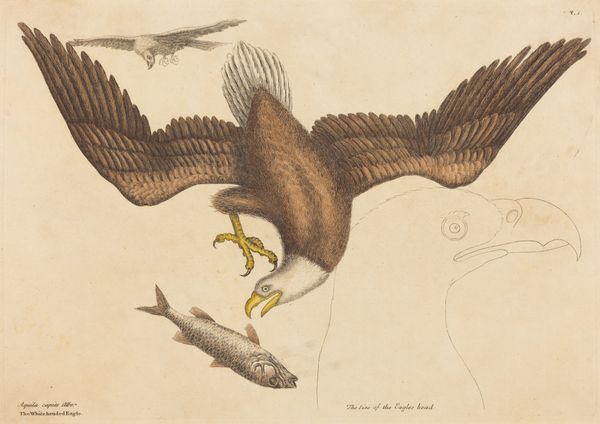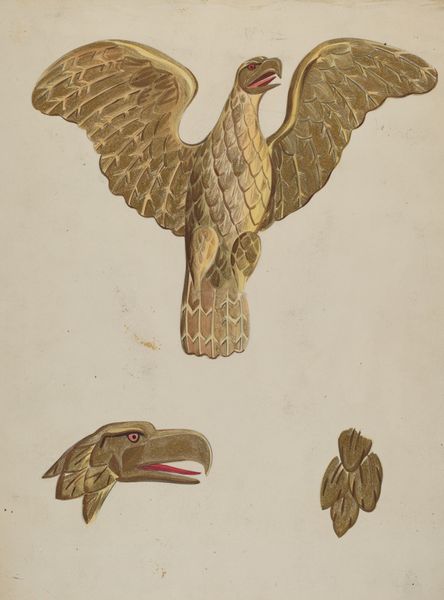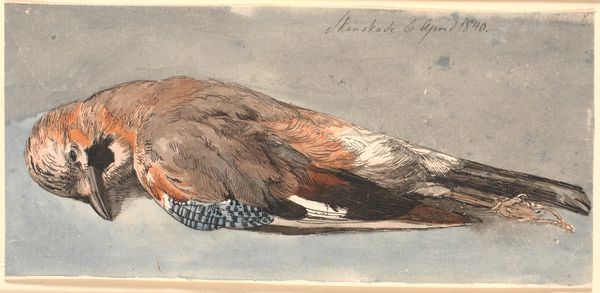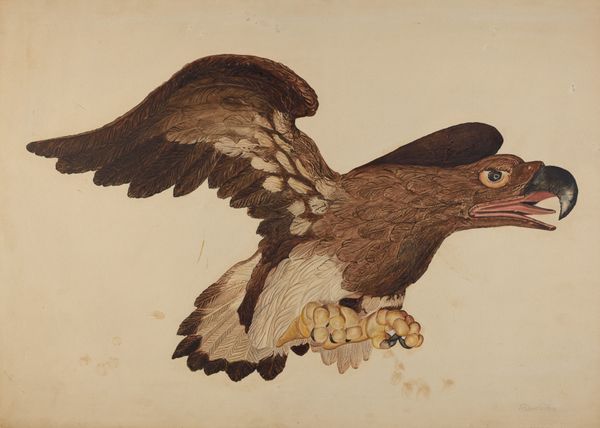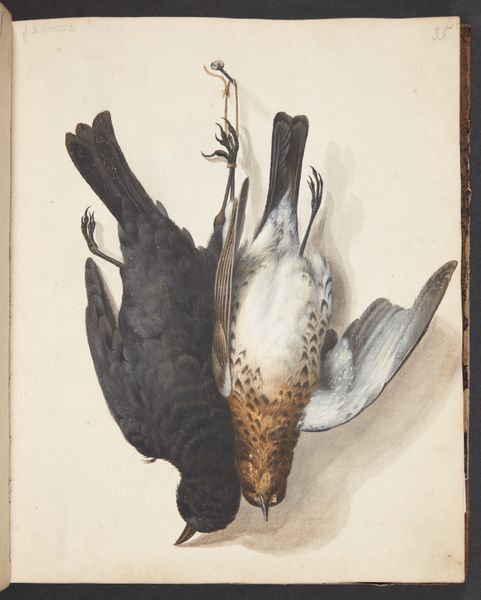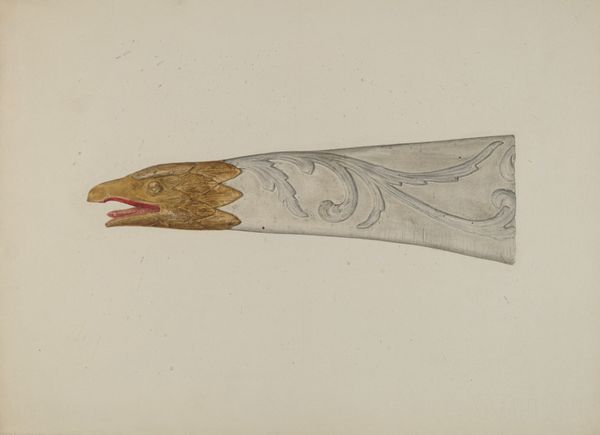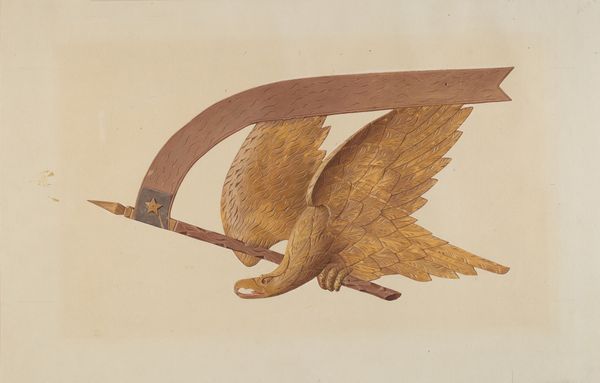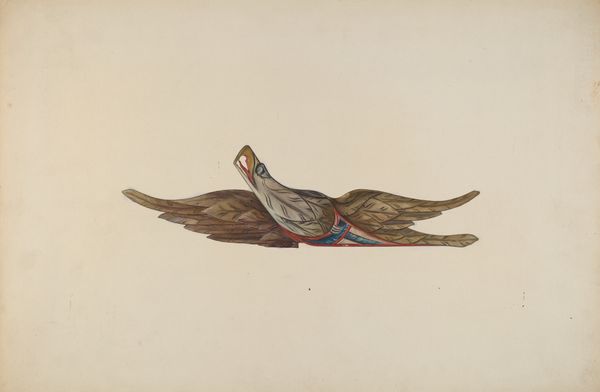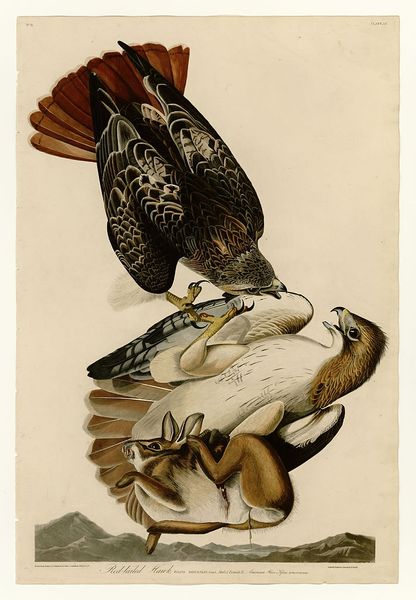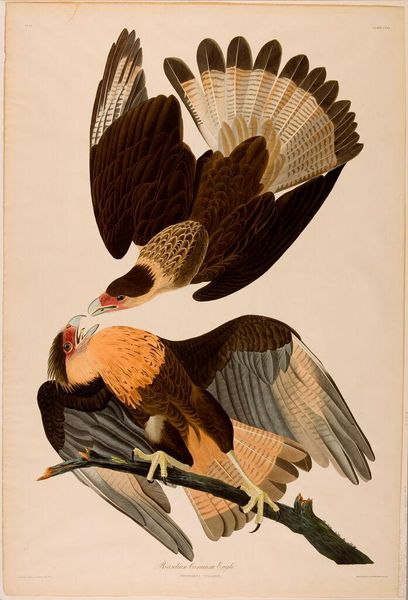
drawing, gouache, watercolor
drawing
gouache
11_renaissance
oil painting
watercolor
watercolour illustration
northern-renaissance
watercolor
Dimensions: 262 mm (height) x 408 mm (width) (bladmaal)
Christoph Amberger rendered these paradise birds in ink and watercolour, likely sometime in the mid-16th century. This wasn't exactly 'fine art' in the modern sense. It was scientific illustration, a means of documenting the natural world. Consider what it would have meant to encounter such exotic specimens at this time. Paradise birds are native to New Guinea, so examples would have made their way to Europe through networks of trade and collecting, becoming specimens within natural history cabinets. Amberger would have had access to the birds, and meticulously recorded the details of their plumage. It is important to consider the economic system that allowed the creation of this image, as it was part of a commercial exchange of natural commodities. So next time you see an image like this, think not only about the beauty and the artistry, but also about the dynamics of labor, trade, and collecting that made it possible.
Comments
No comments
Be the first to comment and join the conversation on the ultimate creative platform.
